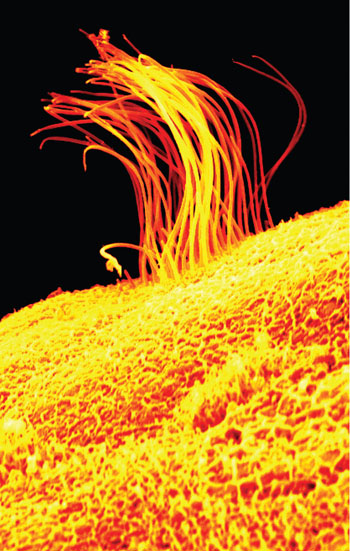Imaging Technique Provides Physicians and Researchers with New Tools
By MedImaging International staff writers
Posted on 12 Sep 2016
A new optical imaging technique called biophotonics is providing researchers and clinicians with new non-invasive imaging tools to study biological molecules, tissue, and cells.Posted on 12 Sep 2016
The technique could be used for cancer imaging and for other diseases, and makes use of infrared, near infrared, visible, and ultraviolet light instead of X-Rays or gamma radiation. The technique can image structures that are too small for X-Ray, Computed Tomography (CT), and Magnetic Resonance Imaging (MRI), and it does not harm the biological cells under investigation.

Image: A multi-ciliated cell, as seen in a scanning electron micrograph (SEM) (Photo courtesy of Biomedical Optics Express).
Biophotonics is expanding the boundaries of radiology and involves multiple medical, scientific, and engineering disciplines. One application of biophotonics is in a cross-sectional microscopic, high-speed, imaging modality called Optical Coherence Tomography (OCT) that is similar to ultrasound in that both use an echo-based paradigm. OCT is used by clinicians to study retina of the eye, and for the diagnosis of macular degeneration and glaucoma. Another modality is called Diffuse Optical Tomography (DOT) that uses near-infrared light for brain, breast, and other soft tissues imaging. The new tools could be also be used for intravascular imaging, the assessment of tumor margins during surgery, image-guided cardiovascular interventions, and the assessment of response to chemotherapy treatment.
Michael A. Choma, MD, PhD, principal investigator at the Yale Biophotonics Laboratory, and assistant professor, Yale University (New Haven, CT, USA), said, “With biophotonics, we can image very small-scale physiology at high-speed resolution. It’s highly complementary to MRI and CT and the technology continues to develop with advances in computing, light sources and cameras. The possibilities are expanding as the people who develop the technology work with the people who use it to improve screening and treatment.”
Related Links:
Yale University














